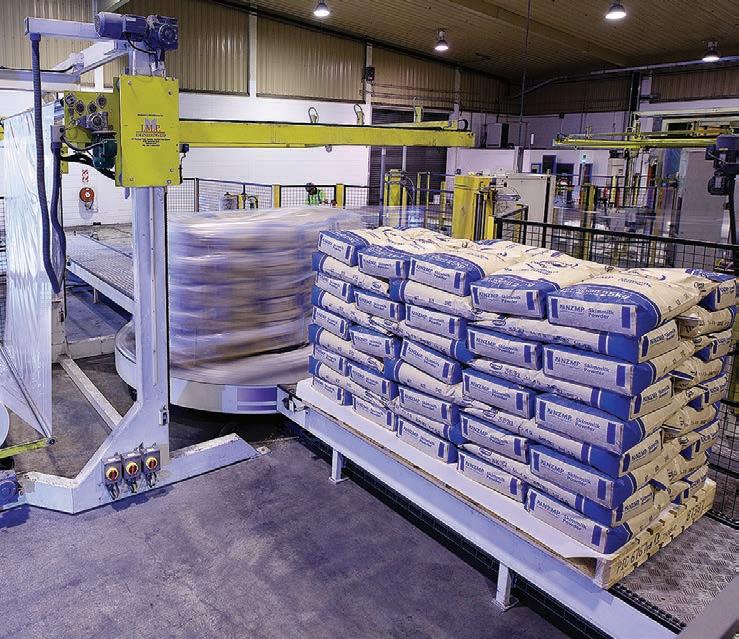
2 minute read
Market softens, margins shrink
by AgriHQ
By Gerald Piddock
The dairy commodity market has gone softer than a Camembert left out in the autumn sun, thanks to a slower-thanexpected return to the market for China.
It has resulted in two pretty sluggish auctions at the GDT, where prices remained flat at 1.5% on February 21 and 0.7% on March 7. Prior to that, prices lifted 3.7% of February 7, giving people hope that it was the start of China’s return to the market after it removed its covid restrictions.
That’s proven to be premature, with buyers in no hurry to push prices higher.
Fonterra finally bit the bullet and in late February it reduced and narrowed its 2022/23 season forecast with a new midpoint of $8.50/kg MS.
At the time, Fonterra chief executive Miles Hurrell said it reflected softening demand at a time of balanced supply.
A fortnight later, Synlait followed suit by dropping its base price forecast by 50 cents to $8.50/kg MS.
It cited subdued global economic activity and a slower-than-expected recovery of Chinese demand following covid-19 lockdowns. Global milk production also showed signs of recovery in late 2022, adding further downward pressure to dairy commodity prices, it said.
Westpac’s latest dairy update highlighted that it had expected signs of this behaviour. Instead what has happened is that prices are “treading water”, as senior agri-economist Nathan Penny described it.
Overall prices have fallen 2% since the start of the year, while WMP prices have increased by 0.7%. He expects global dairy prices to rise over coming months as the Chinese economic recovery gains further momentum.
“However, for now, dairy buyers appear in no rush to bid prices higher. This contrasts with meat prices, for example, which have seen a noticeable uptick in prices for products where China is a key market.”
He believes there may be an overhang of stocks.
“If this is the case, then prices should still pick up over time as the demand lift will eventually lead to a rundown in these stocks.”
Penny said the window for prices to lift is closing as the season fast approaches, bringing in downside risks to Westpac’s $8.75/kg MS forecast for this season.
However, he remains bullish for 20232024 with that forecast unchanged at $10/kg MS.
Equally pessimistic is ASB’s Nathan Keall, who is keeping a conservative outlook for dairy prices over the next 12 months. The bank has adopted Fonterra’s $8.50/kg MS midpoint forecast, down 15 cents from its previous forecast, and retains its pessimistic $7/kg MS new season’s forecast.
Economists aren’t as pessimistic about the outlook for the global economy as they were at the beginning of the year, but global growth is still projected to slow over the course of the year, with the recovery in China set to be offset by a deceleration elsewhere.
“And even in China, consumer spending remains sluggish, and Beijing’s
5% growth target for the year is fairly conservative. In aggregate, that should mean softer global dairy consumption,” he said in the bank’s Commodities Weekly publication.
Rabobank also lowered its forecast, from $9/kg MS to $8.50/kg MS, in its 2023 Dairy Quarterly report.
“But, with the re-opening of China, we do see the possibility of strengthening dairy demand flowing through to improved farmgate prices by the season’s end. And this does provide some upside risk to our new forecast,” the bank’s senior agricultural analyst, Emma Higgins, said.
Beyond China’s re-opening, the bank identifies developments in the South American dairy sector and ongoing geopolitical unrest as factors to keep an eye on.
Back on the farm, it all means the gap between income and production costs is now paper thin. While the weather has impacted milk production, on-farm inflation has remained a huge concern.
Rabobank’s Farm Expenses Price Index showed that dairy farm expenses were 17% higher in the fourth quarter of 2022 compared to the year before that.
“Interest rates are the key contributor, with the Reserve Bank of New Zealand recently hiking the Official Cash Rate to 4.75% – a far cry from the 1% OCR of early 2022.
“Fuel and fertiliser costs, followed by feed costs, are proving the nextbiggest headaches. However, the worm has turned downward for benchmark fertiliser costs, providing some optimism for input price relief over the coming months.”









